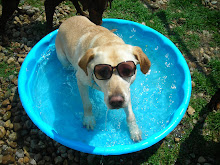The fact is, those precious paws can become seriously infected from a wedged-in piece of gravel or shard of glass, as well as from the cracking that results from heat or dryness. So make sure you are doing your part to ensure your pup is looking forward to joining you on your daily walks, and not secretly dreading them.
The easiest method of prevention is to get to know the pads of your dog’s paws. Feel them out and gently check between them for any bothersome pebbles or debris. Your pup might not find this especially enjoyable at first, so it’s best to be armed with a few distracting treats until they adapt to the routine. Be sure to check them after they have romped around outdoors.
Additionally, it is important to make sure that your dog’s claws are trimmed to the proper length (just before reaching the “quick”) in order to prevent catching or their loss of grip on hard surfaces. It’s best to check the length of your dog’s claws about once a month to see if they need a trim. Some dogs’ nails grow faster than others, though, so find a schedule that works best for your pooch.
Some products can potentially help your pup avoid paw-related injuries–including booties, balms, and even wax. Simple prevention should be adequate enough to keep your pooch safe from a nasty wound or infection, but if need be, seeing your canine stroll around in little booties might just be the highlight of your day.
15 years ago









No comments:
Post a Comment